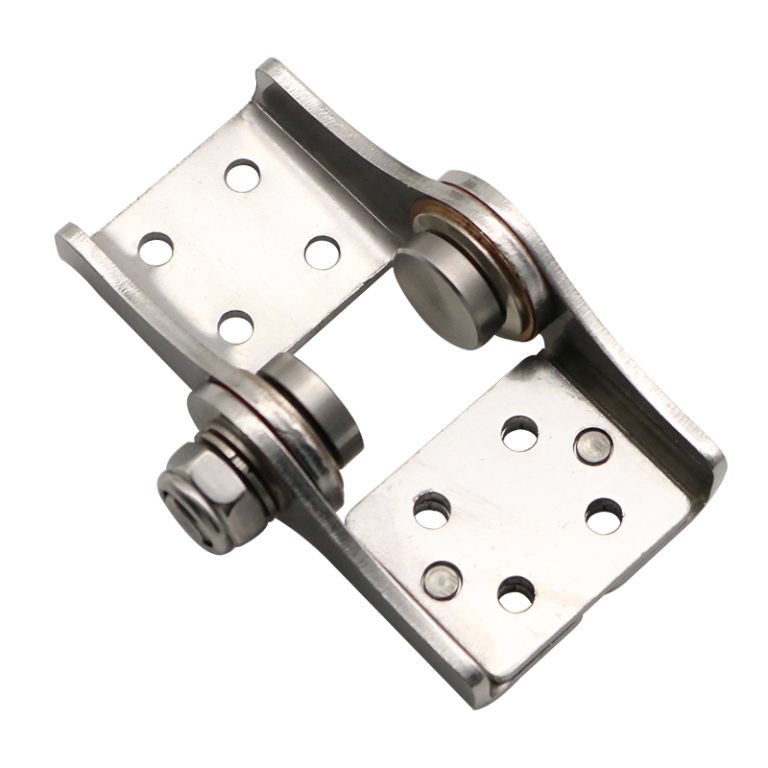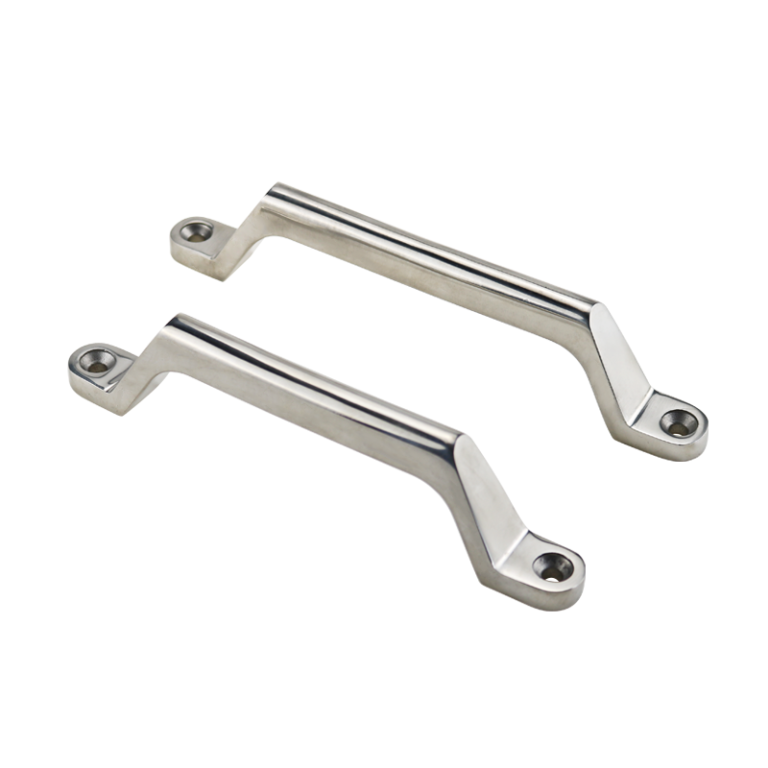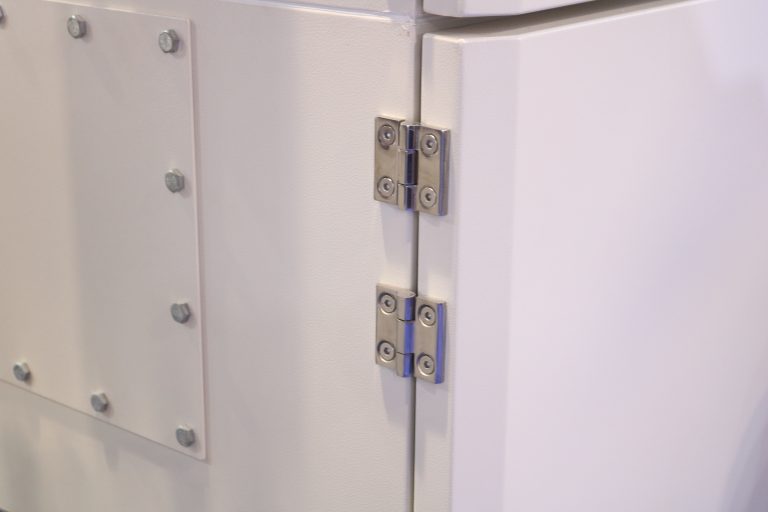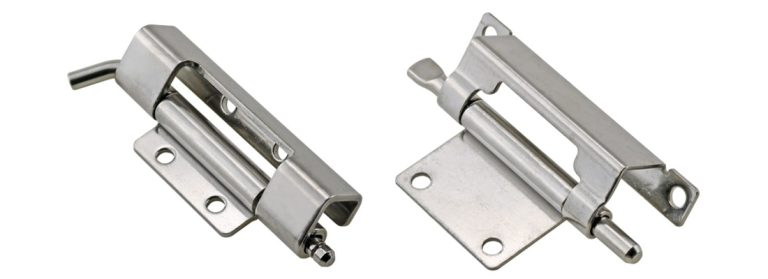HTAN is one of the leading manufacturers of industrial hinges, handles and latches in China.
-
+86 13720060320
-
julius@haitangs.com

Stainless Steel Hinges for Machinery: Selection Tips and Recommendations

In industrial equipment, the performance of each part may affect the overall operational efficiency. Stainless steel hinges, as mechanical equipment’s core accessories for opening and closing, connecting, and bearing loads, directly influence the stability and service life of the equipment.
Understand Your Equipment Application Requirements
Before choosing stainless steel hinges, clearly understanding the equipment’s specific needs is the first step. Different working environments and use scenarios require different types of hinges.
The Working Environment Determines the Material Grade
The material of stainless steel hinges directly affects their corrosion resistance and strength. Common materials are 304 and 316 stainless steel:
304 stainless steel: Suitable for general industrial environments, offering better corrosion resistance and lower cost.

316 stainless steel: Added molybdenum for stronger corrosion resistance, suitable for humid, high-temperature, or chemically corrosive environments (such as food processing or marine equipment).

Reference Standard: “ASTM A240/A240M-20a Standard for Stainless Steel Sheet.”
Mechanical Load and Frequency of Use
- High-frequency opening and closing: For equipment access doors that open and close dozens of times a day, hinges with bearings or reinforced shaft pins should be selected to reduce wear and tear.
- High load scenarios: For hatches with a load capacity of more than 50 kilograms, industrial-grade hinges with thickened structures or double-axis designs are recommended.
Key Characteristics of Stainless Steel Hinges
High-performance stainless steel hinges need to meet the three requirements of strength, corrosion resistance, and ease of installation.
Corrosion Resistance
Stainless steel hinges must resist the erosion of water vapor, oil, or chemicals. For example:
- Food processing equipment: Needs to meet hygiene standards, with 316 stainless steel being the preferred choice.
- Outdoor equipment: Exposed to rain for long periods, needs to pass ISO 9227 salt spray tests.
Data Support: “According to ISO 9227 salt spray test standards“
Strength and Structural Design
- Solid shaft hinge: More durable than hollow shafts, suitable for heavy-duty equipment.
- Double bearing design: Reduces friction and prolongs service life.
Installation and Compatibility
- Screw fixing: Suitable for removable scenarios, requires reserved mounting holes.
- Welding type: Offers high stability, but difficult to maintain later.
- Quick-disassembly type: Convenient for quick maintenance, suitable for medical or automation equipment.
Expert Advice: Equipment design should plan the hinge installation location and mode in advance to avoid later modifications, which can increase costs.
Popular Stainless Steel Hinge Brand Recommendations
Haitan (HTAN)
- Features: Focuses on industrial cabinet door fittings, with products covering the fields of rail transportation and special vehicles.
- Advantage: Integrated production, cost-effective, suitable for small and medium-sized equipment.
Southco (USA)
- Features: Global industrial hardware brand, known for high precision hinges.
- Applicable Scenarios: Medical equipment, aviation equipment, and other fields requiring high precision.
Dirak (Germany)
- Features: Modularized design, fast installation.
- Advantage: The first choice for electric control cabinets and high-end industrial equipment.
FAQ
Q: Which stainless steel is more suitable for outdoor machinery and equipment?
- A: 316 stainless steel is more resistant to corrosion and suitable for humid or salt spray environments (e.g., seaside equipment).
Q: How to determine whether the hinge has industrial-grade load-bearing capacity?
- A: Check the “Maximum Static Load” (e.g., “50kg”) in the product specification and choose thickened or double axle structures.
Q: Can I replace the hinge with other alloy materials?
- A: In non-corrosive environments, aluminum alloy hinges can reduce weight but are less durable than stainless steel.
Q: How to maintain stainless steel hinges in industrial equipment?
- A: Regularly check whether the screws are loose, and add grease every six months (high-temperature environments may need a shorter cycle).
Choose the Right Hinge According to the Usage Scenario
High Temperature/High Humidity Environment

- Recommended Material: 316L stainless steel (low carbon content, resistance to intergranular corrosion).
- Structure: Closed design to prevent water vapor or dust from entering.
Strong Vibration/Heavy Load Equipment

- Recommended Design: Thickened hinge (thickness ≥3mm), with damping function (reduce impact).
Quick Maintenance Scenarios

- Recommended Type: Quick release hinge or spring self-resetting hinge to shorten downtime.
Correct Installation and Maintenance Recommendations
Installation Tips
- Ensure the mounting surface is flat to avoid uneven force.
- Use stainless steel bolts with anti-loosening washers to prevent screws from falling off.
Daily Inspection and Maintenance
- Monthly Inspection: Check if the hinges are loose or making strange noises.
- Quarterly Maintenance: Clean the surface stains and apply grease (high-temperature resistant type is better).
Conclusion
Although the stainless steel hinge is a small part, it is key to the stable operation of mechanical equipment. By clarifying the needs, choosing the right material and brand, and performing regular maintenance, the durability and safety of the equipment can be greatly enhanced. Whether it’s a high-temperature environment or heavy-duty scenarios, a professional selection program can support your equipment.





-768x768.png)
